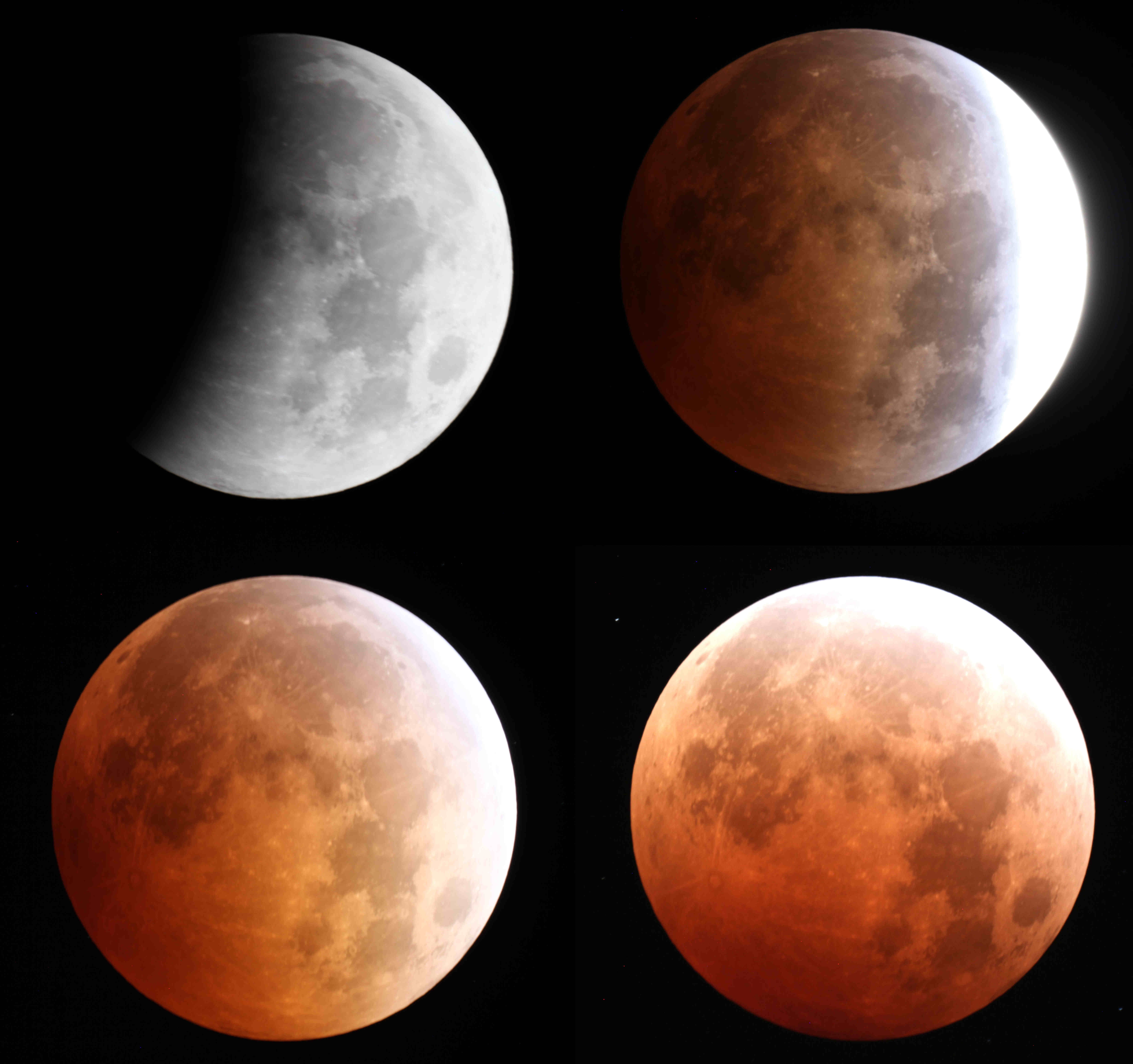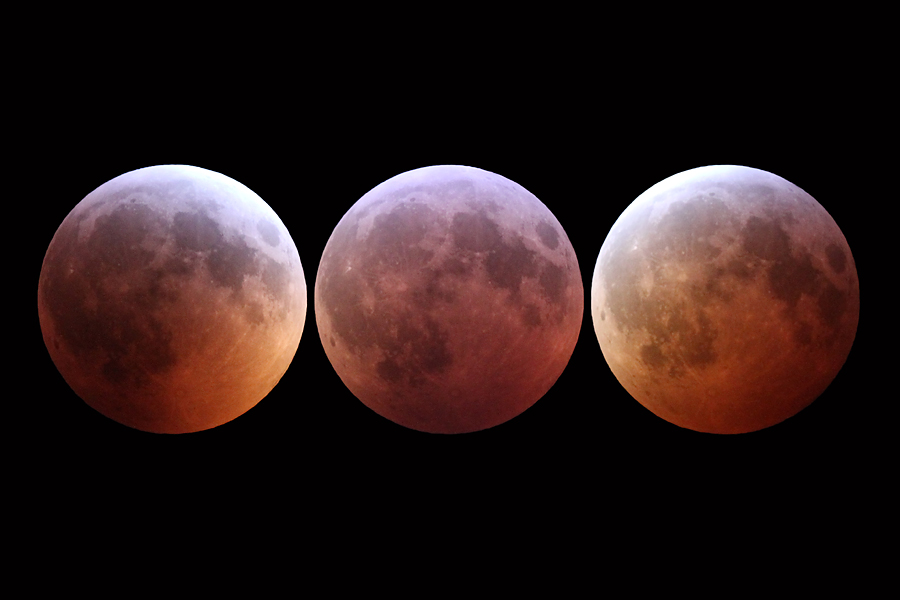Having spent more than 40 years in the mainstream media, on both radio and television, I've learned a bit on how the business works. A friend of mine who is a media consultant once told me that in order to best "sell" a news story it needs to have a "brand" or a catchy phase or title to help the listener or viewer better understand or remember it.
Which is why in recent years, natural occurrences such as a flow of frigid air from the Arctic, a full moon coinciding with perigee, or a sudden intensification of a low-pressure system are now better known, respectively, as the polar vortex, a supermoon, and a bomb cyclone.
Here's another brand that no doubt many of you will be hearing about this week: the blood moon.
Super Flower Blood Moon 2021: Where and when to see the supermoon eclipse
Webcast info: How to watch the supermoon eclipse of 2021 online


If you take a photo of the 2021 total lunar eclipse let us know! You can send images and comments to spacephotos@space.com.
This branding is now seemingly inextricably associated with the phenomenon of a total lunar eclipse, when Earth slips between the sun and the moon. During the total phase of a lunar eclipse, our atmosphere acts like a lens, bending or refracting some of the reddish colors seen at sunrise and sunset into the Earth's shadow. When those colors fall on the moon, our natural satellite appears to glow with a ruddy color, hence the reference to blood.
Origin of the term
The "blood" brand gained traction after the publication of a book in 2013, written by an American pastor, who suggested a correlation between holidays in the Hebrew Calendar and a well-known eclipse cycle known as a tetrad, in which four consecutive total lunar eclipses take place over two years.
It has also been pointed out that in biblical chronicles such as The Book of Joel, Acts, and the Book of Revelation, that when the moon appeared to "turn to blood," it signified an omen foretelling the beginning of the "end times" — when world events would reach a climax.
Get the Space.com Newsletter
Breaking space news, the latest updates on rocket launches, skywatching events and more!
Since a tetrad was to take place between the years 2014 and 2015, there was a great deal of media attention about blood moons, with many people believing that this particular tetrad eclipse series meant a spate of apocalyptic events was soon at hand.
Of course, nothing of the sort happened. The world survived.
But the term "Blood Moon" continues to proliferate to this day.
Not so bloody
The truth is, however, that not every total eclipse of the moon appears uniformly red. Sometimes there are other colors that are seen, or even no colors at all. On rare occasions, the moon has almost completely disappeared.
Such episodes are the result of the conditions of our atmosphere. Looking up toward the moon during a total eclipse, we are watching as it moves through our planet's shadow. But from the perspective of the moon, this would be seen as a total eclipse of the sun, as the black disk of the Earth — appearing nearly four times as wide as the full moon appears in our sky — crosses in front of the sun.
During totality, the Earth would appear encircled by a thin ring of brilliant orange-red light that represents the combined light of all of the sunrises and sunsets that are happening at that moment. This light falls upon the lunar landscape, lighting it up with that same orange-red color. That's why at totality the moon appears "enflamed" or ruddy in color.
However, this ring does not always appear to be evenly bright all the way around, for there may be areas of cloudiness along the rim of the Earth that break the ring here and there. Should clouds predominate all the way around, not much of the orange-red color shines through at all.
The ruddy light can also be blocked by a major volcanic eruption that ejects a large aerosol cloud of ash and dust into the stratosphere, making the moon virtually disappear.
Lunar eclipses: What are they & when is the next one?
Or a wide variety of colors
André-Louis Danjon was a 20th-century French astronomer who in 1921 proposed a five-point scale for evaluating the visual appearance and brightness of the moon during a total eclipse. It has proven to be quite useful in evaluating the transparency of our atmosphere.
For estimating the brightness and color of an eclipse using the Danjon Scale, an L value is assigned:
L = 0: Very dark eclipse, moon almost invisible, especially at mid-totality. After major volcanic eruptions, the eclipses of 1963, 1982 and 1992 were all categorized as 0 on the Danjon Scale. The 1963 eclipse has become known as the "Black Eclipse." The moon became so dark, that some had difficulty finding it in the sky! Hardly a blood moon at all.
L = 1: Dark eclipse, gray or brownish coloration; lunar details distinguishable only with difficulty. Once again, an eclipse that does not fit the blood moon branding. In this case, "charcoal" or "chocolate moon" seems a more appropriate moniker.
L = 2: Deep red or rust-colored eclipse, with a very dark central part in the umbra and
the outer rim of the umbra relatively bright. This type of eclipse, ranking midway on the Danjon scale, might indeed be considered a blood moon, though it might also be considered verging toward a reddish-orange tint. What's wrong with "black tea moon?"
L = 3: Brick-red eclipse, usually with a bright or yellow rim to the umbra.
L = 4: Very bright copper-red or orange eclipse, with a bluish, very bright umbral rim. In October 1967, a total lunar eclipse matched this classification. One Californian observer commented that, "A bright bluish rim to the umbra produced a beautiful 'diamond ring' effect, and caused some observers to wonder if the eclipse was really total."
Blue? Where did that come from? Light passing through the upper stratosphere can penetrate the ozone layer, which absorbs the red light and actually makes the passing light ray bluer. Maybe we can call this a "blue blood moon."
So, as you can see, to simply brand every total lunar eclipse a "blood moon" is really a misnomer. Depending on the state of our atmosphere, the moon can indeed sometimes appear blood-red, but can occasionally also glow with tints of yellow, orange, brown or blue and, on rare occasions almost disappear altogether!
Joe Rao serves as an instructor and guest lecturer at New York's Hayden Planetarium. He writes about astronomy for Natural History magazine, the Farmers' Almanac and other publications. Follow us on Twitter @Spacedotcom and on Facebook.
Join our Space Forums to keep talking space on the latest missions, night sky and more! And if you have a news tip, correction or comment, let us know at: community@space.com.

Joe Rao is Space.com's skywatching columnist, as well as a veteran meteorologist and eclipse chaser who also serves as an instructor and guest lecturer at New York's Hayden Planetarium. He writes about astronomy for Natural History magazine, Sky & Telescope and other publications. Joe is an 8-time Emmy-nominated meteorologist who served the Putnam Valley region of New York for over 21 years. You can find him on Twitter and YouTube tracking lunar and solar eclipses, meteor showers and more. To find out Joe's latest project, visit him on Twitter.









